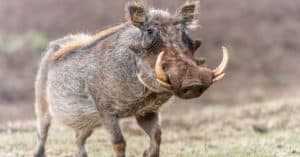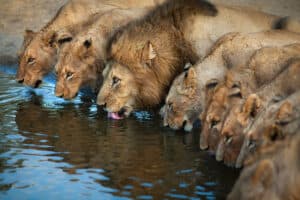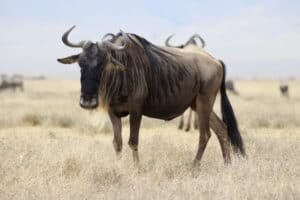Continue reading for our analysis...
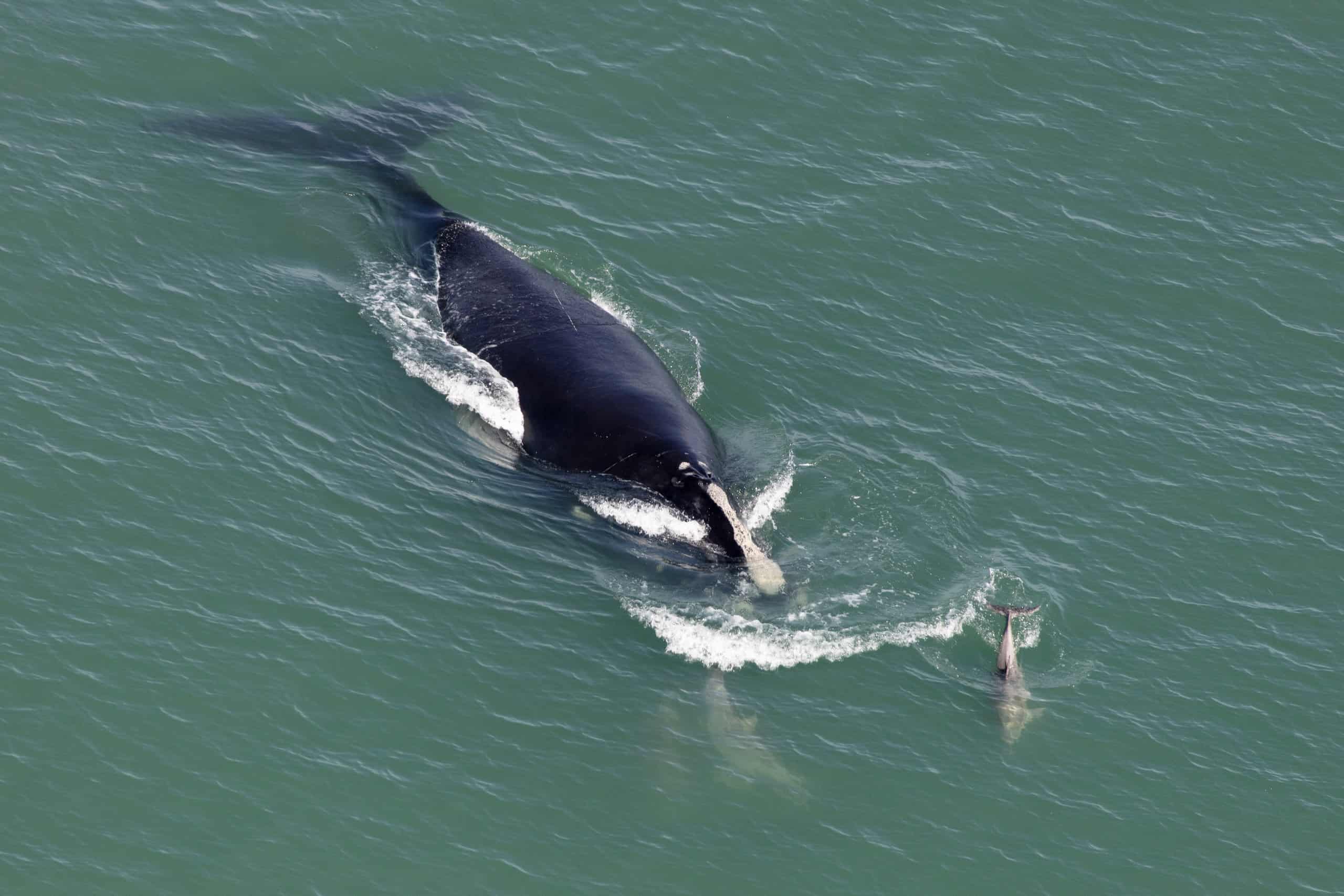
Paddle boarding is the latest craze to hit the world of water sports and millions of people take to lakes, rivers, and seas every week to enjoy a calm and relaxing drive through the water. There are plenty of excuses for falling off a paddle board (loss of concentration, a rogue wave) but being pushed off by a whale has got to be up there with the best!
In this footage, we see an amazing scene where a whale circles a paddle boarder before gently tapping the rear of the board with a huge fin. Incredibly, the paddle boarder is in no danger of falling off and simply continues to float. The aerial footage was captured by Maximiliano Jonas off the coast of Puerto Madryn in Argentina, in August 2021. Since then, it has had almost 4 million views and we are not surprised!
Giants of the Deep
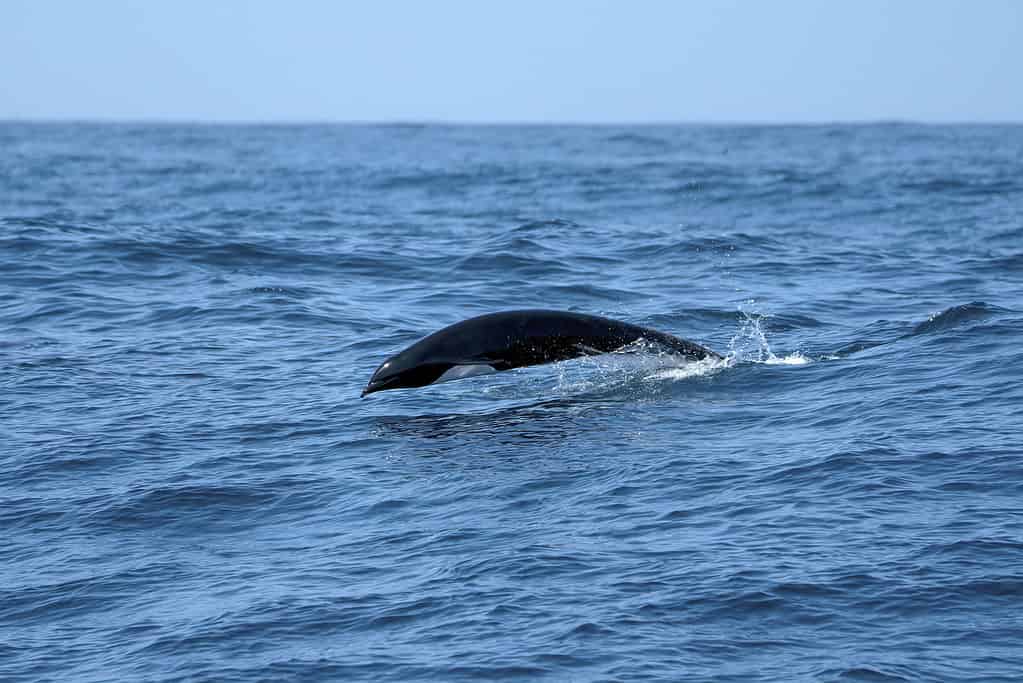
Northern right whales are baleen whales and feed by filtering water through their teeth.
©iStock.com/Kara Capaldo
The majestic creature in this footage is thought to be a southern right whale. It was given this name because it was the ‘right’ whale to catch for a high yield of meat and oil.
It is a baleen whale and belongs to the Eschrichtiidae family.
Baleen whales do not have teeth. Instead, they have keratin-based plates that grow in rows in the gums of the upper jaw and can be many different colors. They are smooth on the outer edge but have frayed inner edges in which small creatures get trapped as the water filters out.
These small creatures can be zooplankton, phytoplankton, algae, and small fish such as krill. This places them quite low in the food chain, even though they are huge in size.
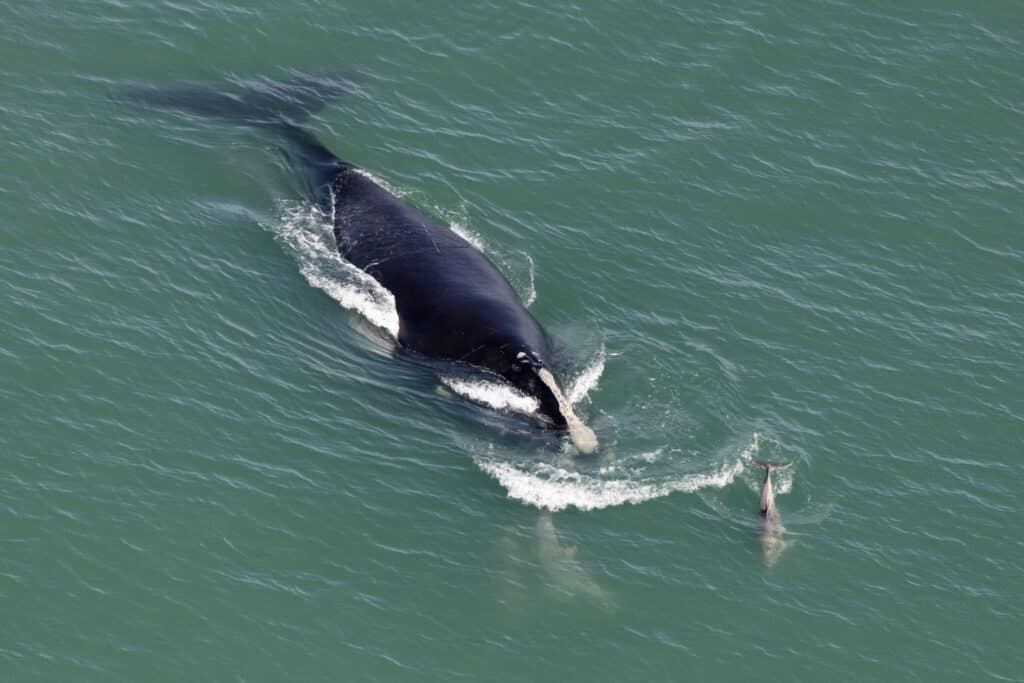
North Atlantic Right Whales are docile, baleen whales that tend to keep close to the coast.
©iStock.com/6381380
Is it Normal for Whales to Interact with Humans?
Most species of whales are not aggressive toward humans, and some, such as the small Beluga and Orcas, seem to bond with caretakers while in captivity. There have been many incidences captured in the media of whales displaying interest and curiosity towards people – but it is rare for a whale in the wild to interact with a human.
However, it is important to note that human interaction can be detrimental to whale populations if not managed properly. Whales may become stressed or disoriented by boat traffic or noise pollution caused by human activity in their habitat. Additionally, accidental collisions between boats and whales can cause serious injury or death for both parties involved.
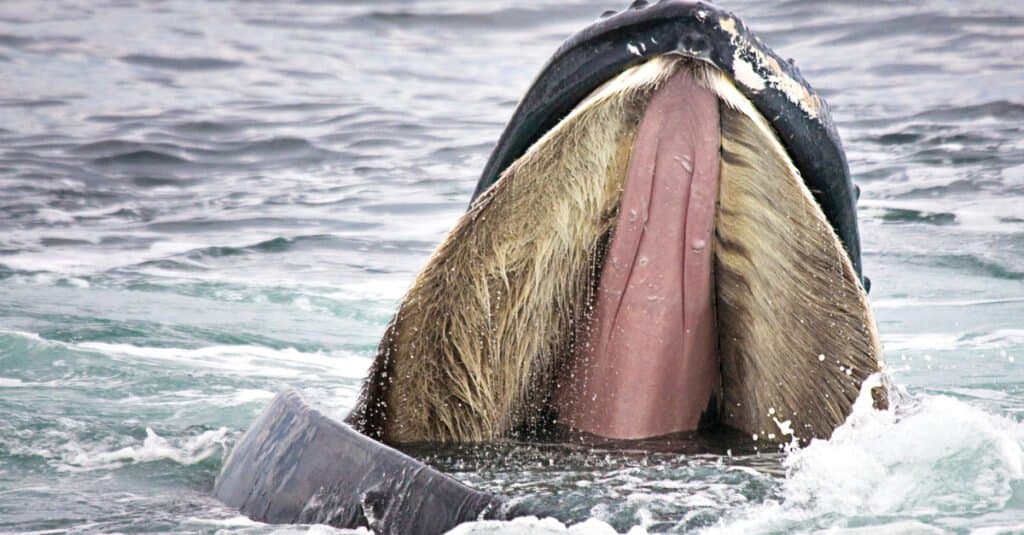
Baleen whales have keratin-based plates that grow in rows in the gums of the upper jaw and can be in many different colors.
©John Tunney/Shutterstock.com
Overall, while certain forms of interaction between humans and whales do exist in some parts of the world, it is crucial that we approach these interactions with caution and respect for these magnificent creatures and their natural habitats.
How Large Do Whales Get?
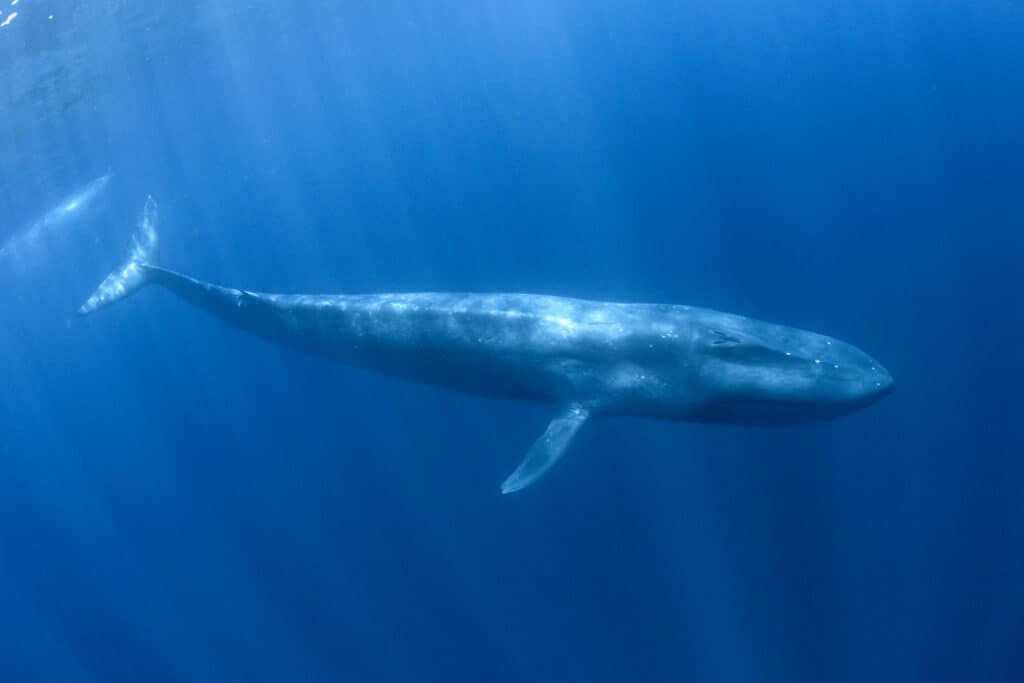
The
blue whale
is the largest animal on Earth.
©Rich Carey/Shutterstock.com
A blue whale is the largest animal on Earth, growing over 100 feet long and weighing more than 150 tons. To put it in perspective, the second-largest animal, the fin whale, is usually 80 feet long and weighs around 60 tons, less than half of the blue whale’s weight.
The Antarctic blue whale, a specific type of blue whale, is the biggest creature on the planet, weighing up to 400,000 pounds (equal to about 33 elephants) and reaching lengths of up to 98 feet.
Slow-Moving Southern Right Whales
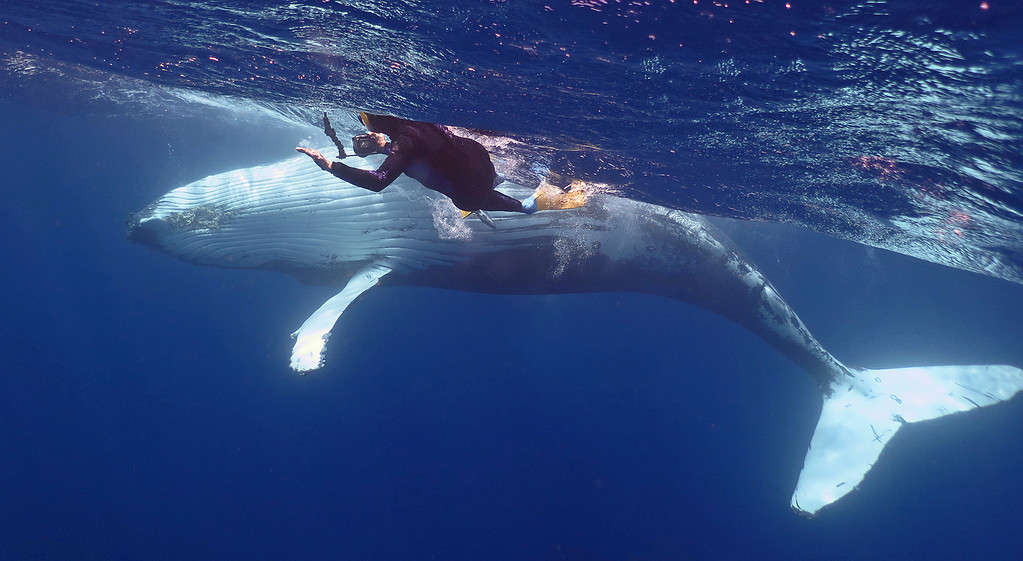
Whales are curious animals.
©Mark Nyman/Shutterstock.com
Southern rights are actually quite easy to spot, even if you are not a whale expert. They move very slowly (much like a paddle board) and this is sadly why they were almost hunted to extinction last century. These majestic creatures are large and stocky – they can grow up to 17 m long and reach 80 – 90 tonnes in weight. They are the only large whale that does not have a dorsal fin. In this video, you can clearly see the blunt paddle-like flippers and the broad head which has callosities that form unique patterns.
Their habitat is the southern and sub-antarctic oceans but breeding always takes in warmer temperate waters found around southern Africa, South America, and Australia. They tend to live a solitary life, although a second whale can be spotted towards the end of this clip. Perhaps they wanted to play with the paddle boarders too!
Thank you for reading! Have some feedback for us? Contact the AZ Animals editorial team.




